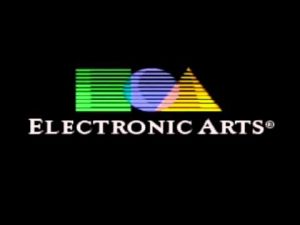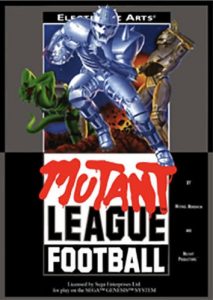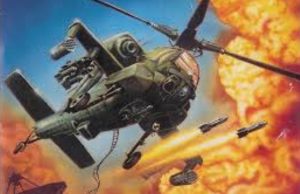 Electronic Arts was already a publishing powerhouse on computers, but its arrival on the Genesis began a new era for the company, with classic after classic arriving on the console. Soon, Electronic Arts was one of the biggest developers for Sega’s 16-bit machine, and the games it released have become some of its most beloved titles. Games like Road Rash, the Strike series, and Mutant League Football became fan favorites, and many gamers still hope for new installments today.
Electronic Arts was already a publishing powerhouse on computers, but its arrival on the Genesis began a new era for the company, with classic after classic arriving on the console. Soon, Electronic Arts was one of the biggest developers for Sega’s 16-bit machine, and the games it released have become some of its most beloved titles. Games like Road Rash, the Strike series, and Mutant League Football became fan favorites, and many gamers still hope for new installments today.
As a project manager at Electronic Arts. Susan Manley was highly influential in the development and release of many of these great series. Bringing years of art experience from the legendary PC RPG developer Strategic Simulations Inc. (SSI), she had a hand in the creation of some of our most beloved EA Genesis titles.
We recently chatted with Ms. Manley about her tenure at Electronic Arts and her work on the Genesis:
Sega-16: Before arriving at Electronic Arts, you were involved in some classic RPGs at SSI. What was it like to make the transition from PC to consoles?
Susan Manley: The “PCs” of the day were mostly C64 and Apple II E, though we did have early IBM and Amiga games. The IBM games at SSI were created to run under EGA (read: 16 very ugly colors designed to make great color bar graphs), and CGA which is four colors black, white, magenta, and cyan. )
Console was a step up in color possibilities but a stronger need to organize pallets. The consoles of the day were also cartridge-based, so the space and compression were a huge issue.
Of course, my job scope had changed when I stepped away from SSI to EA. At SSI, I was an artist and responsible for art project management, as well as art concept and implementation. At EA, I was responsible for project management for the whole development effort and was working with the technical directors and engineers, as well as the artists and audio designers, and at first that meant schedule management and just predicting costs, time, and personnel. Later, I interjected my art and design experience to advise development how to get more out of the graphics we were creating or introduced ideas from other development teams in the company on tricky ways to get around limitations. I also helped architect cross functional groups that built tools to help several projects. The projections I created drove financial forecasting for the company, and I was told by our forecasters things I worked on were far more predictable. This was increasingly important as we became a public company and needed to have product ship on time and maintain the quality.
Incidentally, I still did a little art that went into several of the games.
Sega-16: Were there many female employees at Electronic Arts at the time?

Susan Manley: When I joined EA, there were a lot of women working there, but most of them were not in game or tools development. We had about 50 percent women artists but only a few women engineers. I met Lee Taran (working on Deluxe Paint), Lisa Ching (working on console games) and Nancy Philippine (working on in-house tools). Lisa and I still work together today.
Sega-16: You held positions at the company like product manager and producer. Did you find the competition to be fair when it came to promotions? Did you ever have to contend with sexism?
Susan Manley: Yes, I did. We worked in cross-functional teams but had bosses that did not always understand what we did. I was told directly that I was not seen as producer material (by another non-producer who was, unfortunately, my boss and also not a technical development person). I left EA to become a producer after trying to move into production. It was a natural career path for me. The one product I did produce at EA was on a joint management effort with my husband John Manley, and we managed it because the producer for the group left soon after the project started. 90 percent of the day-to-day management of in-house project development was not managed by producers at EA at that time (this is a generalization; some producers were much more hands on). I think this was because producers at EA were used to managing outside development, which did not include day-to-day technical management. Instead, they checked in at milestones.
Sega-16: You were involved in some great Electronic Arts classics on the Genesis that broke new ground. The Road Rash series, for instance, was quite different than anything else experienced on the console at the time. How did you become involved in its development?
Susan Manley: Road Rash was underway on paper when I joined EA. The product was spearheaded by Randy Breen who originally envisioned it as more of a simulation game. An inside story, I heard was that Richard Hicks, my then-boss, suggested they include street fighting in it, and the name for Road Rash blossomed from that. The fine mechanics for the visuals and the game play was a combination of the amazing engineers the wonderful art team and Randy and his production team playing the game. My contribution, really, was just helping them forecast what changes to the product would impact on time and cost and helping referee the meetings on art and engineering progress and technical issues. I helped the technical directors, producers, and art and engineering teams keep track of the intricate lists and priorities. Road Rash was a really fun game.
Sega-16: EA’s line of basketball games was quite popular during the 16-bit era. Its USA basketball title was especially well-received. Working on it must have been a unique experience, as such a game hadn’t been attempted before. What was the experience like? Was there any major deviation from the other games that preceded it or was it approached the same way?
Susan Manley: The games came from titles EA had developed on the PC and were converted to work on the consoles. How to organize and compress the art and deal with the animation was an amazing technical feat. I was not involved much with that aspect of the development, though I can tell you that the probability and outcome engine was more like an RPG then like physics of modern games. It was stats-driven, which made it seem very real. If a particular player was great at three-point shots in the real world, he was in the game as well.
Sega-16: Electronic Arts also released a series of combat simulators on the Genesis that worked a 3D environment. You had a hand in LHX Attack Chopper and F117A Night Storm. Did it ever seem to you like these games were too ambitious for the hardware?
 Susan Manley: I was impressed we could get them over. The technical challenges of what that took, I am not as aware of. This was pre-“me being involved in the technical design process.” Later, I was involved in them. We had an impressive development team, and we were lucky to have the original engineer Brent Iverson on staff to consult with as well. With LHX, the production team and their technical director wanted to call the product ALPHA after the game engine was up and running in the Sega [Genesis] and got upset when I intervened. The definition of ALPHA at EA at the time had been instituted to know that a product was ready to go into testing. All of the game scenarios and levels were not in yet for LHX, and art and level design can cause bugs. I knew it would delay shipping if we did not get the game scenarios/levels in first. Because I put up an objection, an extra engineer/game layout person was brought down from EA Canada to help out and the game finished on time. It was a sticky set of politics. It was a great game, though.
Susan Manley: I was impressed we could get them over. The technical challenges of what that took, I am not as aware of. This was pre-“me being involved in the technical design process.” Later, I was involved in them. We had an impressive development team, and we were lucky to have the original engineer Brent Iverson on staff to consult with as well. With LHX, the production team and their technical director wanted to call the product ALPHA after the game engine was up and running in the Sega [Genesis] and got upset when I intervened. The definition of ALPHA at EA at the time had been instituted to know that a product was ready to go into testing. All of the game scenarios and levels were not in yet for LHX, and art and level design can cause bugs. I knew it would delay shipping if we did not get the game scenarios/levels in first. Because I put up an objection, an extra engineer/game layout person was brought down from EA Canada to help out and the game finished on time. It was a sticky set of politics. It was a great game, though.
Sega-16: Mutant League Football was very different from EA’s Madden juggernaut, and it’s become a fan favorite. What was your role in its development? Did you think it had the potential to spawn a franchise?
Susan Manley: Mutant League Football was an awesome project. Richard Robbins as a producer was awesome at interjecting cool whacky stuff into games, and his friend Michael Mendheim the designer really created a grand vision. I actually named the game. We had a brainstorm session on it, and I thought of “Mutant League” from comics and just added “Football.” It fit.
I did not really know at the time it could become more than the game we were working on. We had not really thought a lot about brand management as a company, but as you can see they expanded to do those things. I was also partially responsible for one art trick in the Genesis version of embedding graphics in graphics. With a simple palette shift you can have several play fields on one set of stored graphics. This was important because of the restrictions of cartridge development on space.
Sega-16: Were there any projects you worked on that never saw release?
Susan Manley: Lots of them. Bards Tale IV, and lots more I no longer remember the names to. Most were not jelling in a commercial way or had technical issues or the company decided to consolidate budgets or personnel. It does take experimenting to figure out if an idea can be made well.
Sega-16: You left Electronic Arts in 1995, just as Saturn and PlayStation arrived. Why did you leave?
Susan Manley: Reorganization hell (I had five bosses in four years), and I wanted to become a producer. And though I was popular among the artists and engineers because I helped make their jobs possible, I was not as popular among the producers. Having project management exposes what is not working as much as what is.
 Sega-16: Was there a particular game or series that you would have liked to continue working with?
Sega-16: Was there a particular game or series that you would have liked to continue working with?
Susan Manley: I think the Strike series would have been better had I continued on. The flight mechanics of the 3DO version were not up to snuff and I did not see it till it was alpha and would have been near impossible to tune. It did not seem as real as the Genesis version. Other than that, many of the things I had worked on did not move to the upper level consoles.
Sega-16: What games are you playing now?
Susan Manley: Beyond whatever we are working on and I am testing, I play Path of Exile, Words with Friends, and sometimes Candy Crush Saga. I look at other games that come by and see what the tech is, but those are my favorites to spend some time in.
Our thanks to Susan Manley for chatting with us!

Recent Comments